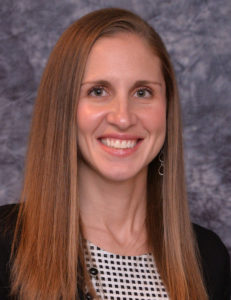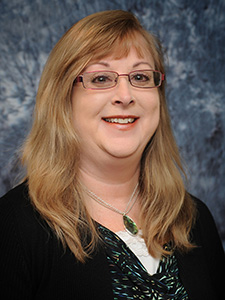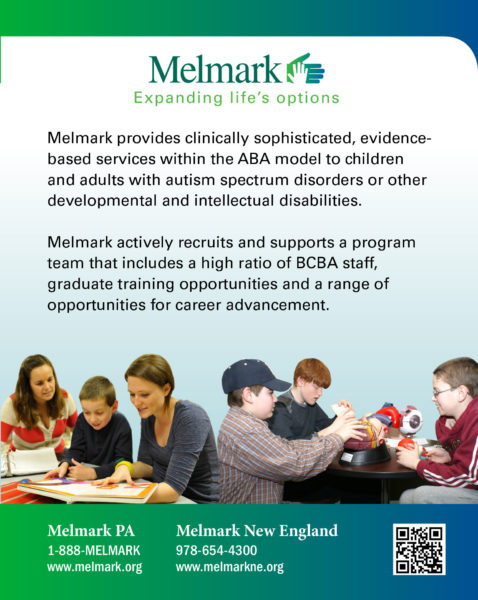Family members of individuals with autism spectrum disorders (ASD) often have mixed feelings about labeling their loved ones with the term autism as this represents a life-long disability. They may be concerned about stigma, fearing that others will avoid, judge, or exclude their family member with autism. They may also worry that a diagnosis will obscure the ability of others to see the person with autism in an unbiased way, and that the knowledge of the diagnosis might impact their efforts to form relationships with the individual with ASD.

Maggie Haag, LSW

Mary Jane Weiss, PhD, BCBA-D

Karen Parenti, MS, PsyD,
Every family’s decision is highly personal and specific, and there is no singular solution that works across individuals with ASD. The heterogeneity of the profiles of learners with ASD necessitates a highly individualized assessment of the individual’s characteristics as well as a thorough assessment of the family’s concerns and goals for the individual with ASD. That assessment must include an analysis of the advantages and the liabilities associated with obtaining and with sharing a diagnosis of autism.
Family members’ fears vary based on the age and characteristics of the person with ASD (e.g., Ludlow, Skelly, & Rohleder, 2011). For example, parents of a young child with ASD might be primarily concerned with how such knowledge could impact inclusive educational placements. Such parents might fear that teacher expectations could be largely diminished by the label, and that the child will not be pushed to his full potential. They may also be apprehensive about specialized placements because they might restrict access to other services and experiences available to regular education services. They may also fear that the knowledge of the diagnosis might make other children less likely to socially connect with the child with ASD. Additionally, they may also worry that the label will be affixed to the child for the duration of his or her educational experiences or for his or her lifespan. They may worry that they have made a decision that will permanently alter the way in which they enter educational and vocational contexts.
For parents of older individuals with autism, there may be concern that a diagnosis is largely irrelevant. They may believe that a diagnosis will increase fear and trepidation on the part of potential employers or community members. The knowledge could lead to false worries about behavioral instability, aggression, or unpredictability. Parents might feel that their child’s level of acceptance by the community could be diminished by the knowledge of the diagnosis.
Diagnosis, however, has real utility for learners with ASD, at all ages. A specific diagnosis opens the door to specialized services that are designed for learners with that particular designation. For example, a diagnosis of autism in early childhood will lead to a recommendation for applied behavior analysis (ABA). Specifically, providers will recommend early intensive behavioral intervention (EIBI), which will lead to the greatest gains. A specific diagnosis of ASD will also help to highlight the essential features that require intervention. It orients providers to the need to focus on social skills, on communication, on behavior regulation, and on skill acquisition across the wide range of adaptive and life skills. It also points providers in the direction of evidence-based interventions that have been associated with success with that population of learners. In the case of ASD, it may point clinicians toward the use of PECS, activity schedules, mand training procedures, discrete trial instruction, task analysis and chaining, incidental teaching, and other naturalistic procedures. For older learners, it will send clinicians in the direction of daily living skills, independence, and functionality and functional skill development. It will also highlight the need to focus on choice and independence and on the assessment of quality of life. In employment contexts, a diagnosis can be used to help others understand behaviors that may occur under stress, supports that will increase success, and social interactions that will lead to successful integration into the workplace.
In addition, diagnosis helps with the attributions others make to the behaviors associated with autism. In the absence of a diagnostic framework, behaviors associated with ASD might be interpreted as volitional, oppositional, or as associated with a conduct disorder. Teachers may view the learner as deliberately defying teacher instructions. They may view inconsistent demonstration of skills as purposeful as well, rather than as an indication of the fragile ability to demonstrate skills regularly. Parents who hear of a child’s misbehavior may view the child as a bad influence or as a poor listener. They may discourage their child from forming social relationships with a poorly behaved child who they perceive as capable of making better choices. Indeed, peers also may be impacted in ways that reduce the likelihood of forming connections. They may view an unresponsive or inconsistent peer as disinterested in social connection, as preferring to be alone, or as disliking them personally. In the absence of an explanation, co-workers of adults with ASD may perceive a person with ASD as unusual, annoying, or threatening.
In other words, the explanations that others will make may not be maximally compassionate toward the individual with ASD. Instead, they may falsely attribute much more intent to the person with ASD than is appropriate or accurate. With an understanding of the diagnosis and its associated features, there is a higher likelihood that the person with ASD will be interpreted in the context of the diagnosis when appropriate. Perseverative responding or behavioral escalation will be understood to be a manifestation of ASD. Similarly, social responses that are odd, awkward, or inappropriate may be seen as circumstances in which the social conventions or expectations were not understood by the person with ASD.
With the contextual understanding of the diagnosis, fear and stigma are dramatically lessened. In addition, learning opportunities are identified. Supports may be put in place to avoid additional challenges in similar circumstances. Additionally, many community contexts and employers are happy to welcome people with disabilities into their settings as part of a broader mission to assist those in need and to provide opportunities for those with disabilities to meaningfully integrate into the local community.
An additional layer of diagnosis for families of people with ASD is the exploration and sharing of additional diagnoses that can further complicate the needs profile of the individual with ASD. Autism is associated with a variety of medical and psychiatric vulnerabilities that can lead to additional behavioral challenges. Anxiety disorders are particularly prevalent and need specific intervention to ensure that they do not pose too much interference (e.g., Chok & Koesler, 2013; Leyfer et al., 2006). This is another area where families may struggle with whether such diagnoses are truly important to obtain. In general, the identification of concomitant medical diagnoses or psychiatric disorders helps to further refine treatment packages to ensure that all needs are accounted for.
Suggestions for Clinicians Working with Families of Individuals with ASD
- Focus on the individual with ASD and ensure that the assessment and plan reflect their unique characteristics;
- Consider both the pros and cons of sharing the diagnosis with educational and vocational settings;
- Link the diagnosis and the unique ways in which it is manifested in this individual to supports that can increase success in the setting;
- Involve the individual with ASD in the process as appropriate, and especially as adults; and
- Seek treatments for ancillary psychiatric and medical diagnoses to ensure comprehensive treatment and the addressing of all relevant needs.
Diagnosis is always a double-edged sword for families. The definitive label of the specific disability of ASD brings both opportunity and limitations. An appropriate diagnosis often leads to specialized treatment that enables maximal skill acquisition and rapid reduction of challenging behaviors. It also provides access to evidence-based instructional procedures that maximize outcome. A diagnosis is also explanatory, serving to confirm suspicions, fill in gaps of understanding, provide information about course and prognosis, and provide a road map for effective intervention.
Even at later ages, a diagnosis helps to target interventions and supports that assist in attaining lifelong goals. Specifically, in adulthood, when services are no longer entitlements, a diagnosis can help gain access to funding sources for services that are now eligibility based. At all ages, informing others about diagnosis ensures that others in the person’s world understand the unique ways in which autism affects this individual’s behavior. This can prevent misattributing behaviors that are part of the disability to personality, willfulness, or intentionality.
An understanding of how the disability can pose social, communication, behavioral, and functional challenges can alleviate the extent to which community members misunderstand the behaviors exhibited by those with ASD. Accurate diagnoses assist in putting behaviors in context, which can lead to compassionate responses and the provision of effective, ongoing supports and services
Karen Parenti, MS, PsyD, serves as the Executive Director of Melmark’s Pennsylvania service division, Mary Jane Weiss, PhD, BCBA-D is Melmark’s Senior Director of Research, and Maggie Haag, LSW, serves as the Senior Director of Adult Services, Adults, at Melmark PA.
Melmark is a multi-state human service provider with premier private special education schools, professional development, training, and research centers.
It is committed to enhancing the lives of individuals with autism, intellectual and developmental disabilities and their families by providing exceptional evidence-based and applied behavior analytic services to every individual, every day. For more information, please visit www.melmark.org and www.melmarkne.org.
References
Chok, J., & Koesler, B. (2013). Distinguishing Obsessive-Compulsive Behavior from Stereotypy: A Preliminary Investigation. Behavior Modification, 38, 344-378.
Leyfer, O.T., Folstein, S.E., Bacalman, S. et al. Journal of Autism and Dev Disorders (2006) 36: 849. https://doi.org/10.1007/s10803-006-0123-0.
Ludlow, A., Skelly, C., & Rohleder, P. (2011). Challenges faced by parents of children diagnosed with autism spectrum disorder. Journal of Health Psychology, 17, 7092-711.





